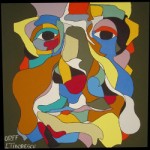 The German composer Carl Orff is widely known for his work in music education, particularly in exploration of the connections between music and movement. The German composer Carl Orff is widely known for his work in music education, particularly in exploration of the connections between music and movement.
In his compositions Carl Orff found a similar connection between the dramatic and the musical, couched in his very personal style of writing, with its insistent, repeated patterns of notes and compelling rhythms.
Carl Orff studied at the Munich Academy and later, in 1920, with Kaminski.
In 1924, with Dorothee Gunther, he founded a school for gymnastics, music and dance, and out of this came his later activity in providing materials for young children to make music, using their voices and simple percussion instruments.
Carl Orff's adult works also seek to make contact with primitive kinds of musical behaviour, as represented by ostinato, pulsation and direct vocal expression of emotion; in this he was influenced by Stravinsky ("Oedipus rex", "The Wedding"), though the models are coarsened to produce music of a powerful pagan sensual appeal and physical excitement.
All of Carl Orff's major works, including the phenomenally successful "Carmina burana "(1937), were designed as pageants for the stage; they include several versions of Greek tragedies and Bavarian comedies.
The best known of all Carl Orff's works the "Carmina Burana", is a large scale work making use of the medieval Latin and Old German lyrics found at the monastery of Benediktbeuern.The work has become even more familiar to unmusical audiences by use of elements from it in advertising and in films.
"Carmina burana" is generally performed only as a form of secular oratorio, in the concert-hall, rather than on the stage, as is "Catulli carmina "("Songs of Catullus"), again intended for theatrical use.
|